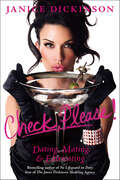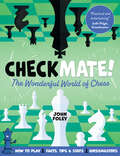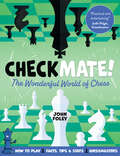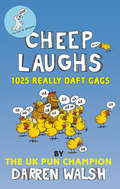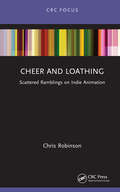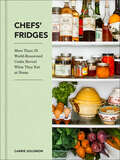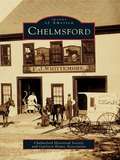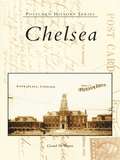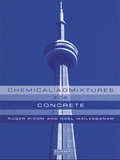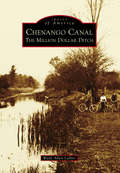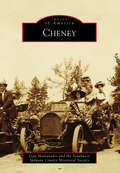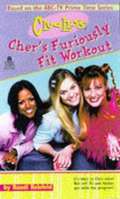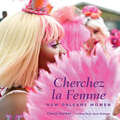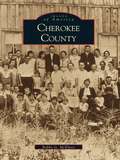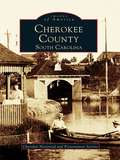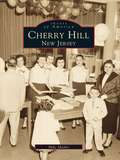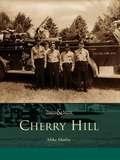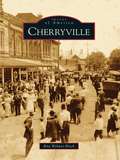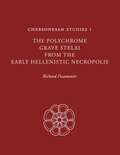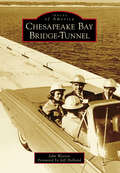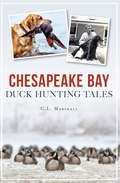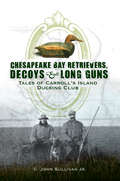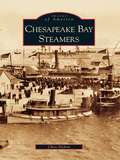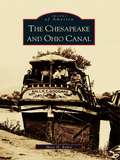- Table View
- List View
Check, Please!: Dating, Mating, & Extricating
by Janice DickinsonSupermodel Janice Dickinson’s over-the-top quest for Mr. Right is a hilarious rollercoaster of famous names, outrageous stories, and vicarious thrills.The inimitable, outrageous Janice Dickinson—America’s first supermodel and the bestselling author of No Lifeguard on Duty and Everything About Me Is Fake... And I’m Perfect—now serves up her most scintillating kiss and tell-all yet in Check, Please! Loaded with uncensored dish on her dating sagas and her stranger-than-fiction bedroom adventures, Check, Please! shows Dickinson as a real life Samantha Jones, and three decades at the top of the fast-track, glamorous world of modeling have given her a wealth of juicy stories. Dickinson dissects nearly 100 dates over a 25-year span—each one more jaw-droppingly outrageous than anything Jackie Collins could dream up. (There’s the Big Pharma billionaire, for example, who blurts out his fantasy of having Swarovski crystals shoved in every orifice before they’ve finished the first course of their first date—a declaration that forces Dickinson to quickly abandon the fantasy of “free botox forever” that he’d inspired in her.) Dickinson’s dates also reflect the changing times and the evolution of what she’s looking for in a man. From the unfettered hedonism of the 80s, a decade spent in white-hot one night stands and steamy affairs, to her heightened desire to find Mr. Right during the 90s, to her current state of play, Check, Please! is a fun, over-the-top vicarious thrill ride—with a core that’s highly relatable.
Checkmate!: The young player's complete guide to chess
by John FoleyChess is the ultimate fun strategy game - and this is the perfect introduction to chess, whether you're a budding master or you've never played before.In simple, fun stages, readers will learn what every piece can do, and how to use them on the board. Clear, original board diagrams make the action easy to understand. Readers will also discover the best tactics to use against their opponent, from how to counter the Queen's Gambit to how to avoid the Fool's Mate. There's plenty to discover about the wider world of chess too - including unusual trivia and unbelievable true chess stories from history. You'll also find a full glossary of chess terms and profiles of some of the world's greatest players inside.Written with clarity and humour, this is the only guide any young chess player will need.
Checkmate!: The young player's complete guide to chess
by John FoleyChess is the ultimate fun strategy game – and this is the perfect introduction to chess, whether you're a budding master or you've never played before.In simple, fun stages, readers will learn what every piece can do, and how to use them on the board. Clear, original board diagrams make the action easy to understand. Readers will also discover the best tactics to use against their opponent, from how to counter the Queen's Gambit to how to avoid the Fool's Mate. There's plenty to discover about the wider world of chess too – including unusual trivia and unbelievable true chess stories from history. You'll also find a full glossary of chess terms and profiles of some of the world's greatest players inside.Written with clarity and humour, this is the only guide any young chess player will need.
Cheep Laughs
by Darren WalshDarren Walsh, the UK’s first Pun Champion™ and the comedy circuit's Tallest Comedian™, debuts his first and greatest joke book encompassing four misspent years of scribbling and doodling. The punderful winner of the funiest joke of the 2015 Edinburgh festival. Look upon these works and despair and/or giggle:I just deleted all the German names off my phone. It's Hans free.Went to my allotment and found that there was twice as much soil as there was the week before. The plot thickens.Green men make me cross’My nephew would like to borrow your Toy Story costume.’‘Oh, Woody?’If Catwoman decided to go to Nepal, what would Catman do?Got a free chimney the other day. It was on the house.K e v i n (Kevin Spacey)
Cheer and Loathing: Scattered Ramblings on Indie Animation (Focus Animation Ser.)
by Chris RobinsonOne of the most acclaimed writers in animation returns with this informal sequel to his previous books on indie animation, Unsung Heroes of Animation, Animators Unearthed, and Mad Eyed Misfits. In this collection, award-winning writer, Chris Robinson, looks at a wide range of films, topics (sex, censorship, cultural politics, programming, felt, gifs, VR, dogs) and filmmakers (Masaaki Yuasa, Xi Chen, Gil Alkabetz, Jacques Drouin, Bordo, Rosto, Joaquín Cociña, Cristóbal León, George Schwizgebel, Lizzy Hobbs, Andreas Hykade, Leah Shore, and many others). Eclectic, brief, fiery, and opinionated, Robinson’s gonzo-tinged writing will amuse, confuse, annoy, and maybe even inspire while, hopefully introducing readers to the wonders of independently-produced animation.
Chefs Wanted: More Than 40 Delicious Recipes for Curious Cooks
by Allegra McEvedyCofounder of LEON, the famous fast-food restaurant, and award-winning chef Allegra McEvedy is bringing advanced cooking to kids. In Beyond Cupcakes, she presents more than 45 tasty recipes suitable for budding chefs who want to take their skills to the next level.This cookbook is more than just cupcakes and aims to give enthusiastic young chefs the opportunity to further their knowledge in the kitchen and whip up meals that are sure to impress. From family favorites like Chili and Nachos, street food like Spring Rolls, sweet treats like Profiteroles, and much more, Allegra’s brand-new cookbook includes classics from around the globe, bringing exciting flavors straight to your door. This cookbook will cover all areas of the kitchen and deliver specialized technique pages to help your young cook become a pro.With simple, step-by-step instructions, photography of every mouth-watering dish, and hilarious illustrations, each chapter will inform and inspire. Allegra McEvedy challenges you to test (and taste!) her recipes— so what are you waiting for?
Chefs' Fridges: More Than 35 World-Renowned Cooks Reveal What They Eat at Home
by Adrian Moore Carrie SolomonThirty-five of the world’s most acclaimed chefs invite you into their home kitchens with this lushly illustrated volume that includes personal recipes.Leading chefs such as Hugh Acheson, Alice Waters, Dan Barber, and others have become famous for the sumptuous creations they offer at their legendary restaurants. But what happens when the chef whites come off and they head home? With exclusive photographs and interviews, authors Carrie Solomon and Adrian Moore provide an inside look at how these icons of cuisine cook for themselves.Each chef’s entry contains an anecdotal essay that sheds light on his or her personal and professional background; annotated photographic spreads showing the contents of their refrigerators and freezers; a short Q&A section; an informal portrait in their kitchen; and recipes. This is a rare, intimate window into the lives and appetites of some of today’s greatest culinary minds—including twelve chefs who share 36 Michelin stars between them.
Chelmsford (Images of America)
by Chelmsford Historical Society Garrison House AssociationDiscover the history of Chelmsford, Massachusetts,from the 1800s to the present in this unprecedentedpictorial history. The collaborative efforts of the Chelmsford Historical Society and the Garrison House Association have made possible this timeless tribute to Chelmsford's past. Both groups are dedicated to the preservation of Chelmsford, and they present this collection as a legacy for future generations.Included in Chelmsford are the people, places, andlandmarks that have colored its history. View the early schools, churches, and civic organizations in the community as well as its industries, including Chelmsford Ginger Ale. Lone Pine, Pulpit Rock, and Beech Tree are among the landmarks pictured. The images in this collection remind us of a more traditional way of life in a simpler era in ournation's history. Step back in time with the Chelmsford Historical Society and the Garrison House Association in celebration of this community's past.
Chelsea (Postcard History)
by Gerard W. BrownUsing stereoviews and postcards, Chelsea chronicles ninety-five years of the city's glorious past as it emerged from agrarian roots to become an important industrial center and home for thousands of European immigrants. The pages are filled with more than one hundred eighty historic views, documenting Chelsea's history from the post-Civil War era to the Vietnam decade. Highlighted are the 1867 Water Celebration, the great fire of 1908, the city's rebirth during Reconstruction, the expansion of the Naval Hospital during World War I (today's Admirals Hill), Prattville, the Soldiers Home, the post-World War I era, and much more. This volume will excite anyone who is preservation minded and enjoys local history.
Chemical Admixtures for Concrete
by Noel P. Mailvaganam M.R. Rixom Daniel P. Manson Carol GonzalesChemical admixtures are used in concrete mixtures to produce particular engineering properties such as rapid hardening, water-proofing or resistance to cold. Chemical Admixtures for Concrete surveys recent developments in admixture technology, explaining the mechanisms by which admixtures produce their effects, the various types of admixtures avail
Chenango Canal: The Million Dollar Ditch (Images of America)
by Wade Allen LallierChenango Canal: The Million Dollar Ditch chronicles the story of a central New York State canal and how it changed the region. In 1825, the Omnibus Canal Bill had called for a survey of a canal linking the Susquehanna River at Binghamton to the Erie Canal in Utica. The idea of a canal was well received in the Chenango Valley but was opposed by many outside it. After eight years of legislative battles, the canal was finally authorized in 1833 with a proposed million-dollar budget. Against seeming insurmountable odds, the 97-mile canal was completed in 1836. Touted as “the best built canal in New York State,” the canal was never profitable for the state, but it did bring a measure of prosperity to the communities along its length, delivering cheap coal from Pennsylvania to emerging steam-powered factories.
Cheney
by Joan Mamanakis Southwest Spokane County Historical SocietyEstablished as a railroad section station on the Northern Pacific Railroad, Cheney boomed into existence as the Spokane County seat in 1880. The City of Cheney incorporated in 1883, and though its role as county seat was short-lived, Cheney long served as an agricultural and mercantile hub for the surrounding Palouse and scabland towns and farms. The rotary rod weeder was invented here and manufactured by the Cheney Weeder Company to be shipped all over the country and the world. The most enduring legacy of the pioneers was Eastern Washington University, beginning as the Benjamin P. Cheney Academy in 1882 with a donation from the town's namesake. In 1891, it became Washington's first normal school for the training of teachers. Growing and diversifying, the university now has a student body of over 10,000.
Cher's Furiously Fit Workout (Clueless Series)
by Randi Reisfeld Amy HeckerlingHere's an all-new novel based on the new ABC-TV prime-time series, and written by Randi Reisfeld, creator of the hit movie Clueless starring Alicia Silverstone.
Cherchez la Femme: New Orleans Women
by Cheryl GerberContributions by Constance Adler, Karen Celestan, Alison Fensterstock, Kathy Finn, Helen Freund, Cheryl Gerber, Anne Gisleson, Cherice Harrison-Nelson, Karen Trahan Leathem, Katy Reckdahl, Melanie Warner Spencer, Sue Strachan, Kim Vaz-Deville, and Geraldine Wyckoff New Orleans native Cheryl Gerber captures the vibrancy and diversity of New Orleans women in Cherchez la Femme: New Orleans Women. Inspired by the 2017 Women’s March in Washington, DC, Gerber’s book includes over two hundred photographs of the city’s most well-known women and the everyday women who make New Orleans so rich and diverse. Drawing from her own archives as well as new works, Gerber’s selection of photographs in Cherchez la Femme highlights the contributions of women to the city, making it one of the only photographic histories of modern New Orleans women. Alongside Gerber’s photographs are twelve essays written by female writers about such women as Leah Chase, Irma Thomas, Mignon Faget, and Trixie Minx. Also featured are prominent groups of women that have made their mark on the city, like the Mardi Gras Indians, Baby Dolls, and the Krewe of Muses, among others. The book is divided into eleven chapters, each celebrating the women who add to New Orleans’s uniqueness, including entertainers, socialites, activists, musicians, chefs, entrepreneurs, spiritual leaders, and burlesque artists.
Cherokee County (Images of America)
by Bobby G. McelweeCreated in 1836 from land held formerly by the Cherokee Indians, Cherokee County is situated in the northeast corner of Alabama, bordered by Georgia to the east. Within these pages, the county's rich and varied history is illuminated by vintage photographs, and its past is brought to life in the faces of its early settlers. The families of the Reverend Whitefield Anthony and others settled at Mudd Creek in 1831 in what was to become Cherokee County. From these first families developed a community that would grow and change along with a young and bustling America, welcoming new industries, farming fertile lands, and building churches and schools to feed the hearts and minds of its young. The photographs in this volume, illustrating the county's past as well as how it looks in the present day, were culled from a variety of sources, including the Cherokee County History Museum, the Pine Grove Baptist Church, and the private collections of many local families. Coupled with a historical narrative, these glimpses of yesteryear will evoke fond memories for all who have made Cherokee County home.
Cherokee County, South Carolina (Images of America)
by Cherokee Historical and Preservation SocietySituated just south of the Carolina border in the scenic foothills of the Appalachian Mountains, Cherokee County offers the charm of small-town life and country living with the convenience of nearby metropolitan areas. In 1897, the year of its founding, the county inherited a rich history that began with the Cherokee Indians. Home to two American Revolutionary War sites, Cowpens National Battlefield and Kings Mountain Military Park, as well as the Overmountain Victory National Trail, it exists as a bevy of historical sites that date before the county was established.Cherokee County pays tribute to this community's decisive history and celebrates the local architecture, business establishments, and residents, both past and present. Historic views, coupled with informative text, highlight the 1914 Carnegie Library, the charming railroad depot, the Limestone Quarry, and construction of the towering smokestack of Gaffney Manufacturing Company. Vintage photographs depict downtown Gaffney, settled almost a century before Cherokee County became a political entity, and historic Blacksburg, known as Black Station before 1888, while bringing to life the evolution of the 1845 Limestone Springs Female High School into the state's popular Limestone College of today.
Cherry Hill, New Jersey
by Mike MathisUntil 1961, Cherry Hill was known as Delaware Township. From its inception in 1844, Delaware Township was an agrarian community dotted with gristmills, blacksmith shops, and taverns. Many farmers earned their livings by selling produce tothe Campbell's Soup Company, which had its canning plant in Camden until the 1980s. Delaware Township remained relatively quiet until the 1920s, when the first residential building boom resulted in neighborhoods such as Colwick, Erlton, Woodland, and Barlow. It was changed forever in 1942, when Vinelandbusinessman Eugene Mori opened the Garden State Park racetrack, which became a popular destination for war-weary workers. Mori also opened the Cherry Hill Inn in 1954. The old Cherry Hill Farm and its brilliant cherry trees would inspire the township'sresidents to change their community's name to Cherry Hill seven years later. Cherry Hill, New Jersey captures the growth of this charming suburban community from the early 20th century through the 1990s. See local landmarks that have long since vanished, such as the Latin Casino, the Cherry Hill Inn, the original Garden State Park, and the Cherry Hill Arena, as well as old farmsteads, street scenes, and the people that helped shape the community.
Cherry Hill: New Jersey (Then and Now)
by Mike MathisLong before shopping centers and housing communities were developed in Cherry Hill, farmers earned their livelihood working the rich soil that stretched between the Cooper River and Pennsauken Creek. Small hamlets such as Ellisburg, Colestown, and Batesville contained thriving businesses. A real estate boom triggered by the opening of the Delaware River Bridge (now the Ben Franklin Bridge) and the end of World War II led to the development of the township's first suburban neighborhoods. New homes, hotels, nightclubs, corporate parks, and one of the nation's first shopping malls appeared where tomatoes, peaches, and corn had grown just a few years earlier.Then & Now: Cherry Hill documents the monumental changes that have occurred in South Jersey's largest suburban municipality over the last 100 years. This book reflects on a time when Chapel Avenue was a dirt lane, when the children of farmers were educated in one-room schoolhouses, when cows grazed on the grounds of the present Cherry Hill Mall, and when stately old houses dominated the rural landscape. Then & Now: Cherry Hill also features long-gone attractions such as the Latin Casino, the Camden County Music Fair, the original Garden State Park, Cinelli's, the Hawaiian Cottage, and the Rustic Inn.
Cherryville
by Rita Wehunt-BlackCherryville, originally called White Pine, was renamed for the cherry trees lining the Old Post Road leading into town. It is located in the rolling hills of the Carolina Piedmont. The village was spun from the wilderness during the mid-1700s, when Scots-Irish and German immigrants settled the area around Beaver Dam and Indian Creeks. These settlers brought with them their languages, religions, music, and customs. The German tradition of shooting in the New Year with muskets and black powder continues today after 250 years. The area was a hotbed of Tory activity during the Revolutionary War, with Col. John Moore, the notorious Tory who was defeated at the Battle of Ramseur's Mill, living on Indian Creek. With the advent of the railroad in the 1860s, the first cotton mill in 1891, and the international firm of Carolina Freight Carriers Corporation in 1932, Cherryville has grown into a sophisticated, modern town.
Chersonesan Studies 1: The Polychrome Grave Stelai from the Early Hellenistic Necropolis
by Richard PosamentirChersonesan Studies 1 presents the painted grave stelai of the Early Hellenistic necropolis of Chersonesos Taurike, a Greek city on the northern shore of the Black Sea. This unique collection of over one hundred objects is of major interest to students of ancient art and Greek culture. Their polychrome decoration has been extraordinarily well preserved, a rarity in the ancient world. They compose a remarkable, even unique, body of evidence of Greek funerary memorial sculpture: their shapes are gender-specific, their depicted objects are gender- and age-specific, and they can be ascribed to a handful of specific workshops. Their surprising uniformity requires an explanation, since comparable assemblages from other parts of the Greek world show substantial diversity in all these aspects. This book provides the first complete catalog and description of the stelai, together with full-color illustrations of all the significant stelai and many details. Through his painstaking recovery and reassembling of fragments, as well as the use of advanced photographic techniques, Richard Posamentir has been able to add a whole new dimension to the study of these artifacts. The volume covers the history of the stelai, analysis of the workshops, and reconstruction of the necropolis that the stelai originally graced. A comparison chapter discusses how the stelai fit into the context of Greek funerary art and provides insights into the culture and society of a city on the Black Sea.
Chesapeake Bay Bridge-Tunnel (Images of America)
by John Warren Jeff HollandAt its opening in 1964, the Chesapeake Bay Bridge-Tunnel was named one of the "Five Wonders of the Modern World" by Reader's Digest magazine. It was the culmination of a concerted, decade-long push by a group of men, led by Lucius J. Kellam Jr., an Eastern Shore native and businessman who dreamed of opening up the remote Eastern Shore to the bustling Virginia mainland. This $200-million, 17.6-mile-long series of bridges, tunnels, islands, and trestle in the middle of the Chesapeake Bay--long dismissed as impractical and even impossible--won the attention of the world at its opening. It also brought an abrupt end to the ferry service that was long a cornerstone of the New York-to-Florida "Ocean Highway," shuttling millions of cars between the Eastern Shore and Hampton Roads.
Chesapeake Bay Duck Hunting Tales (Sports)
by C. L. MarshallIt takes stubborn dedication and passionate optimism to brave the frosty, wet conditions for the chance to shoot ducks and geese. And yet the tradition continues every year as more than one million waterfowl occupy the waters of the Chesapeake. Whether you are setting decoys or watching the sun rise from a blind, hunting the bay is as challenging as it is rewarding. No one understands that better than the generations who have experienced it, from the goose pits of Rock Hall and Chestertown to the frothing whitewater of the Tangier Sound. Join author and hunter C.L. Marshall as he recounts more than forty years of stories and anecdotes chock-full of dogs, good friends and fast-paced waterfowl action.
Chesapeake Bay Retrievers, Decoys & Long Guns: Tales of Carroll's Island Ducking Club
by C. John Sullivan Jr.Carroll�s Island is one of many places along the ChesapeakeBay where vibrant stories of dogs, decoys, guns and waterfowl resonate up from the shoreline. The stories from Carroll�s Island Ducking Club, which was founded in the mid-nineteenth century, offer special insights about the Chesapeake Bay�s waterfowling heritage. In this warm, informative book, C. John Sullivan Jr., one of the nation�sleading decoy collectors and scholars, documents the development of the Chesapeake Bay retriever and how gunners once devised decoys and new firearms and enjoyed the bounty of the Chesapeake Bay. Eventually Carroll�s Island Ducking Club would disappear, but its legacy can still be seen today in the role members played in establishing the Chesapeake Bay retriever as Maryland�s state dog.
Chesapeake Bay Steamers (Images of America)
by Chris DickonSince English settlers first touched the shore of the new country in 1607, the Chesapeake Bay has been a multifaceted engine of American history and commerce. The body of inland tidal water between the largest bay cities, Norfolk and Baltimore, was large enough to be the setting of adventure and close enough to allow smaller towns and cities to grow up on its shores. The common community came to life with the technologies of steamboats that could cover the long distances between North and South relatively quickly. Steamers filled in the nooks and crannies of the bay's geography, and by the mid-19th century, the skies over the bay were lined with dark, waterborne contrails in all directions. Strong machines built to master rough seas while moving gently enough for small harbors, many steamers had life spans that crossed whole eras in American history. Some were drafted into distinguished service in domestic and foreign wars. The steamers plied the bay and its rivers with a feminine grace well into the mid-20th century, when they were overtaken by the rush of modern times. The last steamer sailed into oblivion exactly 150 years after the first of them appeared in Baltimore harbor.
Chesapeake and Ohio Canal, The (Images of America)
by Mary H. RubinWith the founding of his Patowmack Company in 1785, George Washington first hoped to make the Potomac River a viable route to America's West. The skirting canals the company constructed around the Great Falls rapids at Harpers Ferry, Seneca, and Little Falls made the Potomac's rushing waters navigable. The Chesapeake and Ohio Canal Company was chartered by Maryland, Virginia, and Pennsylvania in 1828 to build a truly useful canal through to the Ohio Valley. President John Quincy Adams turned the first spadeful of dirt on Independence Day of 1828 for what was hailed as the "Great National Project" to connect Georgetown to Pittsburgh, Pennsylvania. The canal created an entire community of people and a way of life different from any other. At the height of operations, over 500 boats plied the 184.5 miles of the canal's waters. After many financial difficulties, competition from railroads, and the devastating effects of the Civil War as well as a flood, the canal went into receivership and was closed in 1924. In 1954, Supreme Court Justice William O. Douglas brought attention back to the canal with a fight to preserve the natural beauty for local residents. Today, the canal-listed as a National Historical Park-provides thousands with recreational opportunities, scenic nature trails, and gorgeous views.
